When you think about enhancing your flexibility, it's easy to overlook the role of professional care. Tailored rehabilitation plans from trained specialists can make a significant difference in your progress. You'll find that effective movement techniques, like dynamic stretching and yoga, are just the start. What's often underestimated is how personalized guidance not only keeps you motivated but also adapts to your evolving needs. As you consider the benefits, you might wonder how to create a plan that truly works for you and what other factors contribute to long-term success.
Understanding Flexibility
Flexibility isn't just about being able to touch your toes; it's an essential aspect of both physical health and mental well-being. When you think about flexibility, you might picture gymnasts or dancers, but it goes beyond those visuals. True flexibility encompasses the range of motion in your joints and muscles, which directly impacts your everyday movements and overall quality of life.
Improving your flexibility can lead to better posture, reduced risk of injury, and enhanced athletic performance. It helps your muscles work more efficiently, allowing you to lift, run, or even sit without discomfort. As you engage in regular stretching or flexibility exercises, you'll notice that your body feels more agile and less tense.
Moreover, flexibility isn't just physical. It ties into how adaptable you're in various situations. Just like your muscles, your mind benefits when you embrace flexibility. Being open to new ideas or changes in plans can reduce stress and enhance your problem-solving skills. This mental adaptability allows you to approach challenges with a positive mindset.
Incorporating flexibility into your routine doesn't require hours of commitment. Simple stretches or yoga poses can make a significant difference. Even taking a few minutes each day to focus on your body's range of motion can yield benefits.
Benefits of Professional Care
When you seek professional care, you open up a range of benefits that can greatly enhance your flexibility.
You'll gain access to improved mobility techniques, personalized rehabilitation plans, and expert guidance tailored to your needs.
With this support, you can work towards your flexibility goals more effectively and confidently.
Improved Mobility Techniques
Many people find that professional care greatly enhances their mobility techniques, leading to a more active and fulfilling lifestyle. With the guidance of trained specialists, you'll learn effective methods to improve your movement and flexibility.
Whether it's through physical therapy, chiropractic adjustments, or specialized exercise programs, these professionals tailor their approaches to meet your unique needs.
One key benefit of professional care is the emphasis on proper techniques. You'll discover how to perform movements safely and efficiently, reducing the risk of injury.
Additionally, you'll gain insights into body mechanics, which can considerably enhance your everyday activities, from walking to lifting objects.
Moreover, professional care often includes educational components. You'll be empowered with knowledge about your body and how to maintain mobility as you age.
As your strength and flexibility improve, you may find daily tasks become easier and more enjoyable.
Incorporating these improved mobility techniques not only fosters physical well-being but also boosts your confidence.
As you become more active, you'll likely notice a positive shift in your overall quality of life, making professional care an invaluable investment in your future.
Personalized Rehabilitation Plans
One of the standout benefits of professional care is the development of personalized rehabilitation plans tailored specifically to your needs. These plans take into account your unique circumstances, including your medical history, current physical condition, and personal goals. By focusing on your individual requirements, professionals can create a roadmap that maximizes your chances of success.
With personalized rehabilitation plans, you're more likely to stay motivated and engaged in your recovery. When you see progress that aligns with your specific goals, it reinforces your commitment to the process.
Plus, these plans can adapt as you progress, ensuring that your rehabilitation evolves alongside your developing abilities.
Another key advantage is that a tailored approach helps in targeting specific areas of improvement, whether it's increasing flexibility, strength, or endurance. You won't waste time on generic exercises that don't address your specific challenges. Instead, you'll focus on exercises that yield real results for you.
In essence, personalized rehabilitation plans empower you. They provide a clear path forward, keep you accountable, and ultimately enhance your overall well-being, making your journey to recovery more effective and fulfilling.
Expert Guidance and Support
The expertise of healthcare professionals offers invaluable guidance and support throughout your rehabilitation journey. When you're working to enhance flexibility, having expert advice can make all the difference. They'll help you understand the correct techniques, ensuring you don't risk injury while you stretch and strengthen your body.
With their knowledge, professionals can provide real-time feedback, helping you adjust your form and technique as necessary. This immediate support not only boosts your confidence but also accelerates your progress. You'll learn how to push your limits safely, enabling you to reach your flexibility goals effectively.
Additionally, professionals can identify specific areas of tightness or weakness, tailoring their recommendations to maximize your results. They'll empower you to take charge of your rehabilitation by offering strategies that fit your unique needs and lifestyle.
Moreover, the emotional support is just as essential. Knowing you have someone in your corner who understands your challenges can motivate you to stay committed to your plan.
With expert guidance and support, you're not just stretching; you're building a stronger, more flexible you. Embrace this partnership, and you'll find your journey to enhanced flexibility both rewarding and effective.
Types of Professional Services
Exploring the diverse array of professional services can greatly enhance your flexibility in both personal and professional contexts. Understanding the various types available allows you to choose the right support tailored to your needs.
One key type of professional service is coaching. Whether it's life coaching, career coaching, or wellness coaching, these professionals provide guidance to help you navigate challenges, set goals, and develop strategies. By gaining insights from a coach, you can make informed decisions that foster flexibility in your life.
Another significant service is counseling or therapy. Mental health professionals offer a safe space where you can explore your thoughts and feelings. They help you develop coping mechanisms and resilience, which are essential for adapting to life's changes.
Additionally, consulting services are available across various fields, including business, finance, and healthcare. Consultants analyze your situation and provide expert advice, enabling you to make strategic decisions that can lead to greater flexibility in your operations.
Training services are also important. These can range from skill development workshops to professional seminars. By investing in these services, you enhance your capabilities and adaptability in your career, making you more versatile in the workforce.
Lastly, personal trainers and fitness coaches assist in physical well-being, which can indirectly improve your mental flexibility. By engaging in structured fitness programs, you strengthen your body, which can translate into a more adaptable mindset.
Physical Therapy for Flexibility
Physical therapy offers a targeted approach to enhancing flexibility, playing an essential role in your overall physical well-being. When you engage with a physical therapist, they assess your specific needs and limitations, creating a personalized plan to improve your range of motion. This tailored approach helps you understand your body better and addresses any underlying issues that may be restricting your flexibility.
Through various techniques like stretching, strengthening exercises, and manual therapy, you'll work on increasing your flexibility effectively. Your therapist will guide you through dynamic stretches that warm up your muscles, followed by static stretches that promote lasting flexibility gains. They'll also incorporate resistance training to strengthen the muscles around your joints, which can further enhance your mobility.
It's important to stay consistent with your therapy sessions and follow the prescribed exercises at home. By doing this, you'll not only improve your flexibility but also reduce the risk of injury and enhance your athletic performance.
Additionally, as you progress, your therapist will adjust your program to guarantee you're continually challenged and engaged.
Incorporating physical therapy into your routine can lead to significant improvements in your overall physical health. You'll notice increased ease in daily activities and a greater sense of well-being.
Role of Wellness Coaching
Wellness coaching can play an essential role in enhancing your flexibility by providing personalized strategies tailored to your needs.
You'll discover various techniques that not only improve your flexibility but also promote overall well-being.
Benefits of Wellness Coaching
A skilled wellness coach can be a game-changer in your journey toward better health and flexibility. They provide personalized guidance, helping you identify your goals and create a tailored plan to achieve them. With their support, you'll gain clarity on what it takes to improve your overall wellness, which can greatly boost your motivation.
Wellness coaching also fosters accountability. When you have someone to check in with, you're more likely to stay committed to your health goals. This accountability can help you overcome obstacles that once seemed intimidating.
Plus, a wellness coach can equip you with tools and strategies to manage stress, which is essential for maintaining flexibility in both your body and mind.
Another benefit is the holistic approach they take. A wellness coach doesn't just focus on physical fitness; they consider your emotional and mental well-being as well. This thorough perspective guarantees you're making sustainable changes that enhance your quality of life.
Ultimately, working with a wellness coach can empower you, providing the encouragement and knowledge you need to navigate your health journey with confidence and ease.
Techniques for Improved Flexibility
While many people think of stretching as the primary method for improving flexibility, a wellness coach can introduce you to a variety of effective techniques that go beyond basic stretches.
These methods can help you achieve greater mobility and enhance your overall well-being. Here are three key techniques you might explore with your coach:
- Dynamic Stretching: This involves movement-based stretches that prepare your body for exercise. It increases blood flow and improves range of motion, making it an excellent warm-up routine.
- Proprioceptive Neuromuscular Facilitation (PNF): Combining stretching and contracting your muscles, PNF techniques can greatly enhance flexibility. A coach can guide you through partner-assisted stretches to maximize effectiveness.
- Yoga and Pilates: Both practices emphasize controlled movements and breathing, which can help improve flexibility. Your wellness coach can tailor sessions to focus on specific areas where you seek improvement.
Embracing these techniques allows you to develop a well-rounded approach to flexibility.
With guidance from a wellness coach, you can't only improve your range of motion but also reduce the risk of injuries in your daily activities.
Mindfulness and Mental Flexibility
Mindfulness practice enhances your mental flexibility by training your brain to adapt to new situations and challenges. When you engage in mindfulness, you cultivate an awareness of your thoughts and emotions without judgment. This awareness allows you to approach problems with an open mind, shifting your perspective as needed. Instead of getting stuck in rigid patterns of thinking, you learn to explore different viewpoints and solutions.
One effective technique to boost your mental flexibility is mindful meditation. By focusing on your breath and observing your thoughts, you create a space between stimulus and response. This gap gives you the opportunity to choose how to react, rather than simply responding out of habit. As you practice, you'll notice your ability to adapt increases, helping you navigate both daily stressors and larger challenges with ease.
Additionally, mindfulness encourages you to be present, which can reduce anxiety about the future or ruminating over the past. This presence helps you recognize that change is a constant part of life. Embracing this idea fosters a more flexible mindset, allowing you to pivot when faced with unexpected circumstances.
To enhance your mental flexibility, try integrating mindfulness into your daily routine. Even just a few minutes a day can make a significant difference. Over time, you'll find that you're not only more adaptable but also more resilient in the face of challenges.
Embrace the journey of mindfulness, and watch your mental flexibility flourish.
Nutrition's Impact on Flexibility
Nutrition plays an essential role in your flexibility, as the right nutrients can support muscle elasticity and joint health.
Staying well-hydrated is just as important, as it helps maintain the suppleness of your muscles.
Let's explore how vital vitamins, minerals, and hydration work together to enhance your flexibility.
Essential Nutrients for Flexibility
To maintain and enhance flexibility, it's vital to pay attention to your diet. The right nutrients can support your body's ability to stretch and move freely.
Here are three key nutrients you should incorporate into your meals:
- Omega-3 Fatty Acids: Found in fish, walnuts, and flaxseeds, omega-3s help reduce inflammation and promote joint health. This can improve your overall range of motion.
- Magnesium: This mineral plays a significant role in muscle function and relaxation. You can find magnesium in leafy greens, nuts, and whole grains. Ensuring you get enough magnesium can help prevent muscle stiffness.
- Vitamin C: Vital for collagen production, vitamin C supports the health of connective tissues. Citrus fruits, strawberries, and bell peppers are excellent sources. Adequate vitamin C intake helps maintain the elasticity of your muscles and tendons.
Hydration and Muscle Elasticity
Proper hydration is fundamental for maintaining muscle elasticity and overall flexibility. When you're well-hydrated, your muscles can stretch and contract more effectively, reducing the risk of injury.
Water plays an important role in nutrient transport and waste removal, which are critical for muscle recovery and function. If you don't drink enough fluids, your muscles can become stiff, making it harder to achieve a full range of motion.
To guarantee ideal hydration, aim to drink water consistently throughout the day, particularly before, during, and after physical activity. Remember that factors such as climate, exercise intensity, and your body's specific needs can influence how much you should drink.
Besides plain water, consider incorporating hydrating foods like fruits and vegetables into your diet. Foods like watermelon, cucumbers, and oranges can boost your fluid intake and provide necessary vitamins and minerals that support muscle function.
Ultimately, staying hydrated not only enhances muscle elasticity but also supports overall physical performance.
Creating a Personalized Plan
When you commence on the journey of enhancing your flexibility, creating a personalized plan is vital for your success. A one-size-fits-all approach won't yield the best results because everyone's body and goals are unique. Tailoring a plan to your specific needs can make a significant difference in how effectively you increase your flexibility.
Begin by evaluating your current flexibility levels and identifying areas that need improvement. This might involve a few basic tests or simply reflecting on movements that feel restricted.
Once you have a clear understanding of your starting point, you can develop a structured plan that includes the following key components:
- Goal Setting: Define your flexibility goals, whether that's improving your splits, reaching your toes, or enhancing athletic performance. Make certain your goals are realistic and measurable.
- Routine Development: Design a routine that incorporates dynamic stretching, static stretching, and possibly yoga or Pilates. Choose exercises that target the muscles you want to improve and make sure you vary them to prevent plateaus.
- Consistency and Frequency: Commit to practicing your routine regularly. Aim for at least three times a week, and track your sessions to stay accountable. Consistent practice is essential for long-term flexibility gains.
Measuring Progress and Success
Measuring progress and success in your flexibility journey is essential for staying motivated and making adjustments to your routine. You can track your improvements through various methods, guaranteeing you stay engaged and focused on your goals.
Start by setting clear, achievable benchmarks. These could be specific stretches or movements you want to master, or a certain range of motion you aim to achieve.
Keep a journal to document your progress. Record your flexibility exercises, noting how many repetitions you complete and how deep you can go into each stretch. This not only helps you see where you started but also highlights your improvements over time.
Take photos or videos of yourself performing stretches to visually gauge your enhancement. Sometimes, seeing the difference can be more motivating than numbers alone.
Consider incorporating regular assessments. You might schedule these weekly or monthly, testing your flexibility in key areas. This could involve measuring the distance between your fingertips and the floor when reaching for your toes or checking how far you can extend your leg while lying down.
Additionally, listen to your body. Pay attention to how you feel during and after each session. If you notice increased comfort or ease in your movements, that's a sign of progress.
Celebrate these small victories, as they contribute greatly to your overall flexibility journey. By actively measuring your progress, you'll maintain motivation and guarantee you're consistently moving toward your flexibility goals.
Long-term Maintenance Strategies
Maintaining flexibility over the long term requires consistent effort and smart strategies. You can't just stretch once and expect lasting results. To keep your muscles limber and joints healthy, you need to incorporate specific habits into your routine.
Here are three effective long-term maintenance strategies:
- Establish a Regular Stretching Routine: Set aside time each day or week dedicated to stretching. Consistency is key, so whether it's a morning ritual or evening cooldown, make it a non-negotiable part of your schedule.
- Incorporate Strength Training: Balancing flexibility with strength is vital. Incorporate exercises that enhance your muscle strength while promoting flexibility, such as yoga or Pilates. These workouts not only improve your range of motion but also support the muscles around your joints, reducing the risk of injury.
- Listen to Your Body: It's important to pay attention to how your body feels during and after stretching. If something doesn't feel right, don't push through the pain. Modify your approach based on your body's feedback to avoid setbacks and guarantee a sustainable flexibility practice.
Conclusion
Incorporating professional care into your flexibility journey can make all the difference. By understanding your unique needs and goals, tailored rehabilitation plans help you progress safely and effectively. With expert guidance, you'll stay motivated and confident as you improve your flexibility. Remember to measure your progress and adjust your routine as needed. By committing to long-term maintenance strategies, you'll not only enhance your flexibility but also boost your overall physical performance and well-being.



